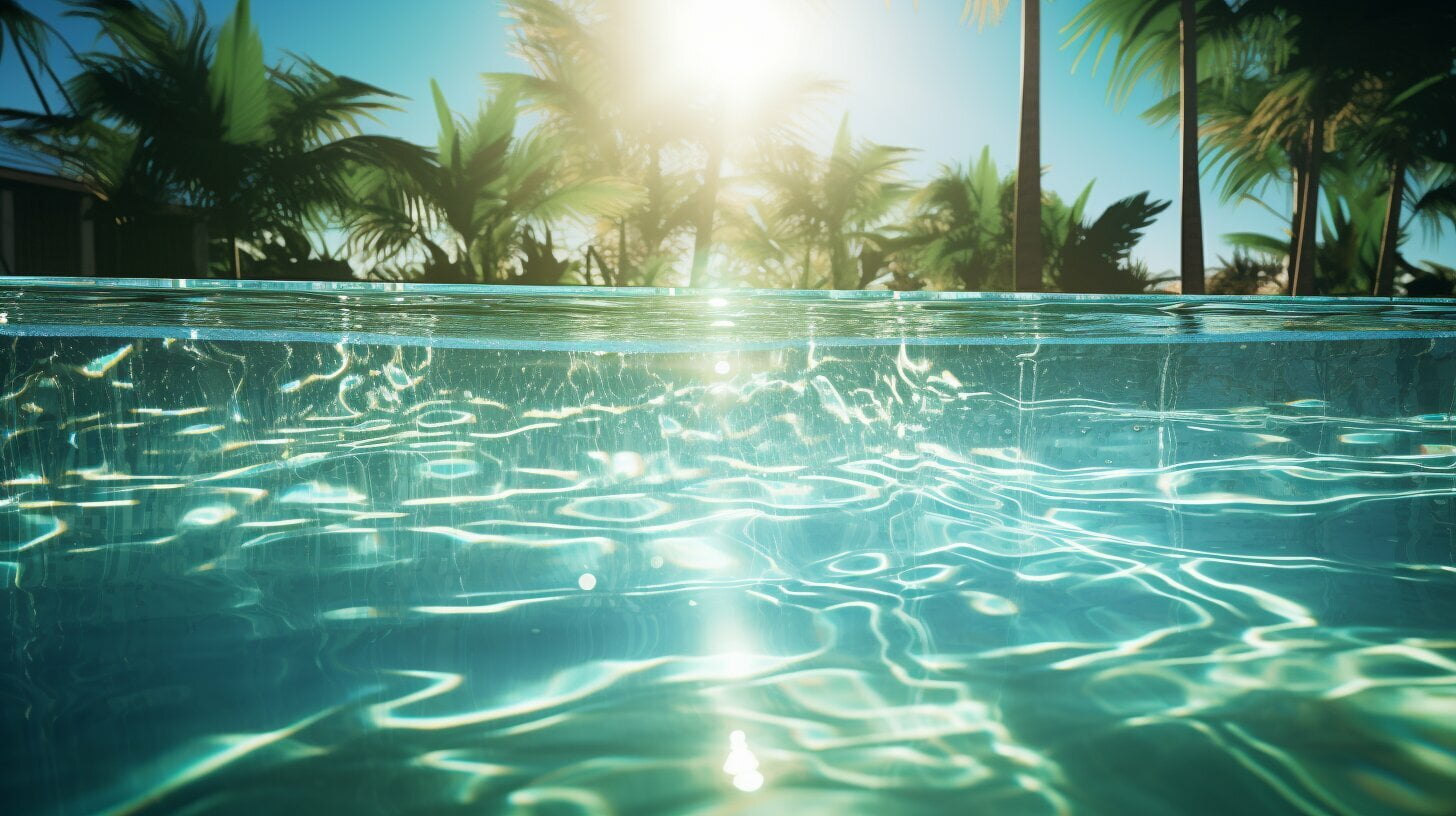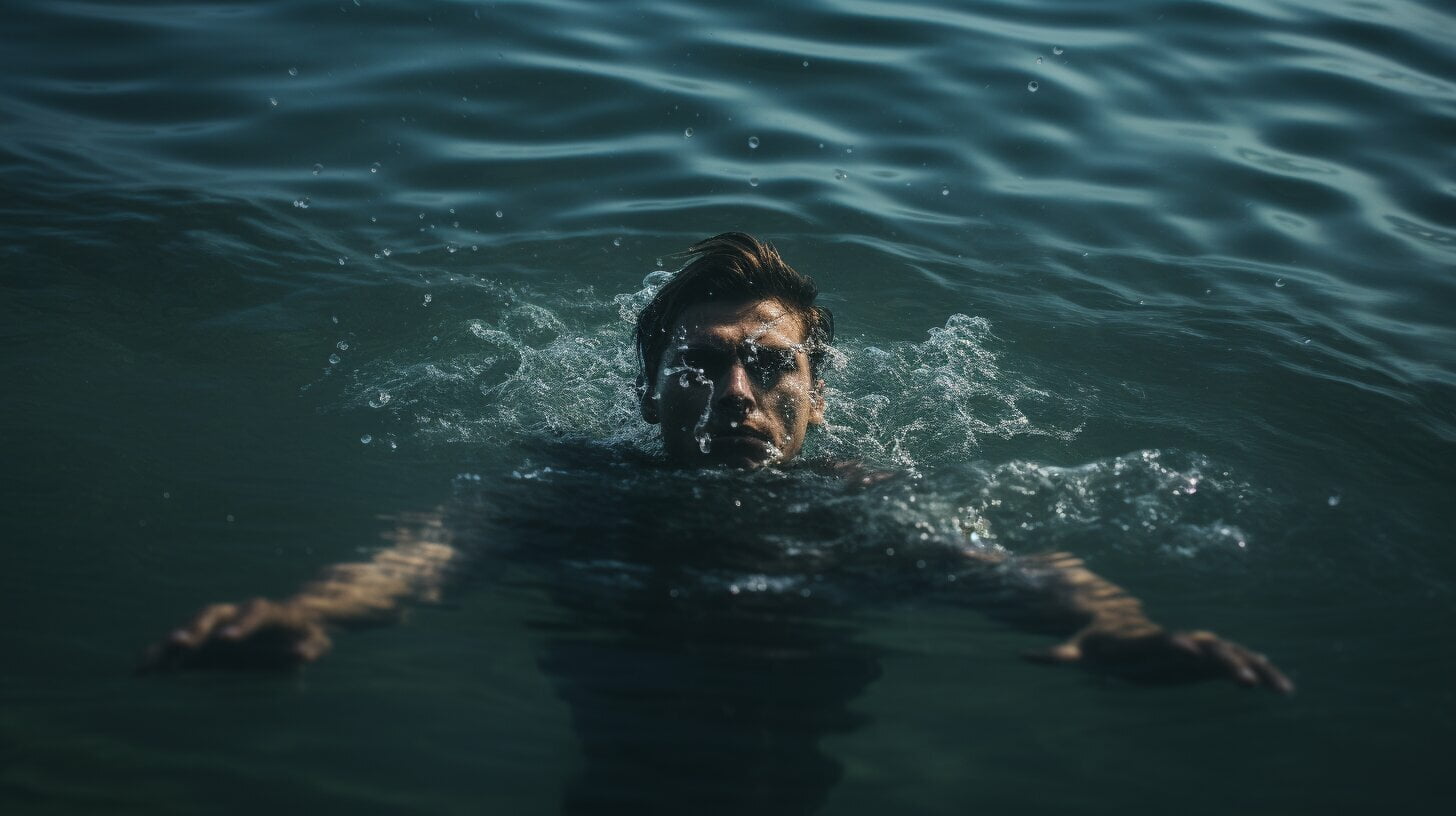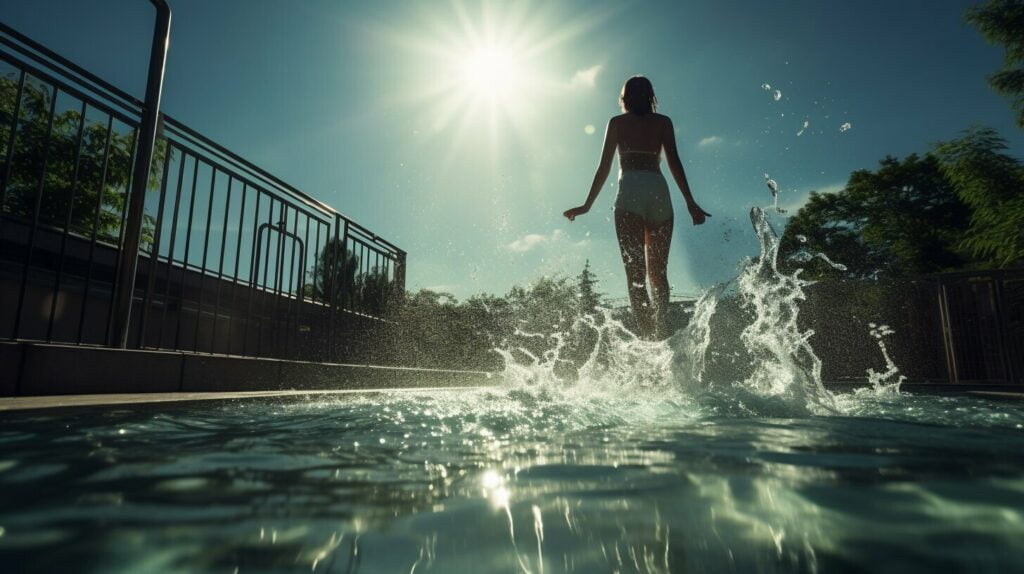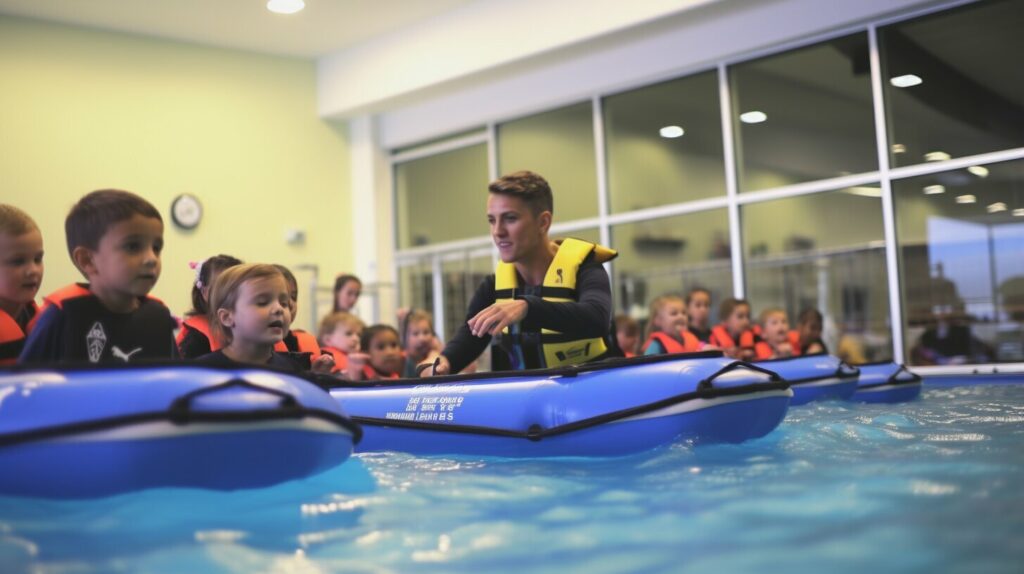Learn To Swim – Why Should You Know How To Swim
Learning to swim is a great way to stay active and have fun, whether you’re a child or an adult. Not only is swimming an excellent form of exercise, but it’s also an important skill to have in case of emergencies. If you’re a beginner looking to learn how to swim, there are a few essential tips and techniques you should keep in mind to make the process as enjoyable and successful as possible.
Key Takeaways:
- Learning to swim as a beginner is an important skill to have.
- Swimming is an excellent form of exercise.
- By keeping a few essential tips and techniques in mind, you can make learning to swim an enjoyable and successful experience.
Why Learn to Swim as an Adult?
If you’re an adult who has never learned to swim, now is the perfect time to start. Learning to swim as an adult can offer numerous benefits, both physically and mentally.
Physical Benefits
First and foremost, swimming is a great form of exercise. It provides a full-body workout that can help you build strength, improve cardiovascular health, and increase flexibility. Swimming is also a low-impact sport, which means it’s easy on your joints and is less likely to cause injury compared to high-impact exercises like running.
Swimming can also help you lose weight and maintain healthy body composition. According to the American Council on Exercise, swimming can burn as many calories as running, but without the wear and tear on your body. So if you’re looking for a fun and effective way to stay in shape, swimming is a great option.
Mental Benefits
Swimming is not just good for your physical health, it can also benefit your mental health. Swimming is a relaxing and meditative activity that can help reduce stress and anxiety. The repetitive motion of swimming can also have a calming effect on your mind, helping you feel more centred and focused.
For many adults, swimming can also be a fun and social activity. Joining a local swimming club or taking lessons with a group of friends can be a great way to meet new people and build friendships.
How to Start
If you’re ready to start swimming, the first step is to find a swimming instructor or a swimming school near you. Look for a qualified instructor who has experience teaching adults, and who can help you feel comfortable and confident in the water.
Before you start your lessons, it’s a good idea to invest in a few basic swimming essentials, such as a swimsuit, goggles, and a swim cap (if you have long hair). Your instructor may also recommend other equipment, such as fins or a kickboard.
Remember, learning to swim takes time and practice. Don’t be discouraged if you don’t get the hang of it right away. With patience, persistence, and the help of a qualified instructor, you can become a confident and skilled swimmer.
So take the plunge and start swimming today!

Mastering Basic Swimming Techniques
Learning the proper technique is crucial for any beginner swimmer. This not only ensures that you swim more efficiently, but also helps you to avoid injuries. Below are some basic swimming techniques to get you started:
Freestyle (Front Crawl)
| Step | Description |
|---|---|
| Kick | Start with your legs extended and close together. Flutter your feet up and down rapidly. Try to keep your toes pointed and kick from your hips, not your knees. |
| Arm strokes | Alternately extend your arms over your head and pull them down towards your hips. Keep your elbows straight and fingers together as you pull through the water. |
| Breathing | Inhale through your mouth to the side as your head turns. Exhale through your mouth or nose underwater. |
Breaststroke
| Step | Description |
|---|---|
| Kick | Start with your feet together and legs extended. Pull your feet towards your body and kick outwards, then together again. Keep your knees close together and your feet flexed. |
| Arm strokes | Start with your arms extended forward. Pull them back towards your chest, then push them out again. Keep your elbows close to your sides and your hands together. |
| Breathing | Take a breath in before beginning your arm strokes. Hold your breath during the pull phase, then exhale through your nose or mouth as you push your arms forward again. |
Backstroke
| Step | Description |
|---|---|
| Body position | Lie on your back with your arms extended over your head and your legs extended behind you. Keep your body straight and your head tilted back. |
| Kick | Flutter your feet up and down rapidly, keeping your legs close together. Kick from your hips, not your knees. |
| Arm strokes | Rotate your arms alternately in a circular motion. Extend them over your head, then pull them down towards your hips. Keep your elbows straight and your fingers together. |
| Breathing | Breathe in through your mouth as your arms move over your head. Exhale through your mouth or nose as your arms move down towards your hips. |
Remember to practice these techniques regularly and ask for help from a swimming instructor or friend if you need it. Soon enough, you’ll be swimming like a pro!

Learn to swim in a Swimming pool
One of the biggest challenges for beginners is feeling comfortable in the water. It’s important to start in the shallow end and gradually move to deeper water as you gain confidence.
You can begin by simply dipping your face in the water and blowing bubbles. Practice holding your breath and slowly submerging your head, remaining under for a few seconds before resurfacing.
| Tip: | Hold onto the edge of the pool or a kickboard for support while practising. |
|---|
Next, try floating on your back with your arms stretched out. This will help you relax and trust the water to support your body. Focus on your breathing and keep your head tilted back to keep your face out of the water.
As you progress, gradually move to deeper water and try treading water or swimming short distances. Remember to always go at your own pace and never push yourself too far too quickly. Building water confidence takes time and patience, but with practice and determination, you’ll soon be swimming like a pro.

Breathing Techniques in Swimming
Learning proper breathing techniques is essential for any beginner swimmer. Holding your breath while swimming can cause discomfort and limit your swimming ability. By exhaling underwater and inhaling when you turn your head, you can maximize your oxygen intake and swim more efficiently.
When exhaling, blow bubbles steadily and consistently through your nose or mouth. This will help you to stay relaxed and regulate your breathing. When inhaling, turn your head to the side and take a quick breath without lifting your head too high, which can affect your balance and posture.
Avoid taking shallow breaths, as this can lead to hyperventilation and discomfort. Instead, take deeper breaths and exhale slowly to fully expel carbon dioxide from your lungs.
Remember to coordinate your breathing with your stroke, whether it’s freestyle, breaststroke, backstroke, or any other swimming style. Exhale when your face is in the water and inhale when your face is out of the water. By mastering your breathing techniques, you’ll be able to swim with more ease and confidence.

Using Arms and Legs: Coordination and Technique
Learning to coordinate your arms and legs is essential to progress in swimming. To propel yourself forward, you need to use a combination of both your arms and legs. Here are some tips to help you improve your coordination and technique:
| Tip | Description |
|---|---|
| Keep your arms straight | As you bring your arms forward, make sure you keep them straight, and your hands should be close to touching. This creates a streamlined position that reduces drag and helps you move faster through the water. |
| Flutter kick | Use a flutter kick to keep your legs moving in a continuous motion. Flutter kick involves kicking your legs up and down rapidly. Your legs should be close together and your feet should be pointed. |
| Breathing rhythm | Establish a breathing rhythm that works for you. Try exhaling underwater and inhaling when your face is out of the water. Avoid holding your breath, as this can lead to fatigue and discomfort. |
| Swimming laps | Once you have mastered the basics, challenge yourself by swimming laps. This will help you build endurance and improve your swimming skills. |
Remember, mastering coordination and technique takes time and practice. Don’t be discouraged if you don’t get it right away. Keep practicing and you’ll see improvements in your swimming skills.

Boosting Confidence in the Water
Now that you’ve learned some basic swimming techniques, it’s time to focus on building your water confidence. Feeling comfortable in the water is crucial for being able to swim effectively and safely.
One way to improve your water confidence is to start by practising in the shallow end of the pool. Spend some time getting used to having your face in the water and blowing bubbles. This will help you feel more at ease and build up your comfort level.
Once you feel comfortable, try venturing into the deeper end of the pool. Take it slowly and remember to focus on your breathing. Don’t be afraid to take breaks and rest whenever you need to.
Another helpful tip for building water confidence is to use flotation devices such as kickboards or pool noodles. These can provide support while you practice your swimming skills and can help you feel more secure in the water.
Remember that building water confidence takes time and practice, but with patience and persistence, you’ll soon be able to swim more confidently and enjoyably.

“The water is your friend. You don’t have to fight with water, just share the same spirit as the water, and it will help you move.” -Aleksandr Popov
Exploring Additional Resources: Private Lessons and Swimming Schools
If you want to learn how to swim but prefer a more personalized approach, private swimming lessons might be the right fit for you. Experienced swimming instructors can provide one-on-one coaching and tailor their lessons to your specific needs and skill levels.
Private lessons can be more expensive than group lessons, but personalized attention can help you progress faster and overcome any obstacles you may be facing. Additionally, private lessons can be scheduled at a time and place that is convenient for you.
If you prefer to learn in a group setting, there are many swimming schools available for adults. These schools offer group swim lessons for varying skill levels, from beginners to advanced swimmers.
Swimming schools can provide a structured and supportive environment to help you progress in your swimming skills. Group lessons are also a great way to meet new people who share a similar interest in swimming.
When choosing a swimming school or private instructor, be sure to do your research and choose someone who is experienced and reputable. It’s important to feel comfortable and safe with your instructor and to communicate your goals and concerns with them.

No matter which option you choose, private lessons or group lessons, the most important thing is to keep practising and never give up. With the right instruction and plenty of practice, you can become a confident and skilled swimmer.
Conclusion
Learning to swim can be a rewarding experience for both children and adults. Whether you are a beginner or have some swimming skills, it is never too late to start swimming and master the techniques. Remember to take it slow and be patient with yourself. Over time, you will become more confident and skilled in the water.
If you are struggling with water confidence or mastering certain techniques, consider seeking the help of a swimming instructor or enrolling in a swimming school. You can always find learn to swim tips on the internet. With personalized attention and guidance, you can improve your skills at a quicker pace. Swimming tips for starters can greatly enhance one’s learning experience. Breathing techniques for swimming beginners are essential for developing proper swimming form and maintaining stamina in the water.
Overall, swimming is a fun and healthy activity for people of all ages. With practice and dedication, you can become a strong and confident swimmer. So grab your swimsuit, head to the pool, and start your swimming journey today!










